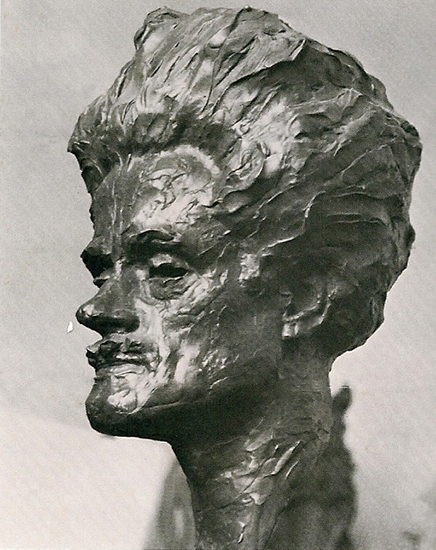11.5 The Scots language in the 19th and 20th centuries
Scotland has been described by academics as a ‘sociolinguist’s paradise’, meaning that the connections between language and social class are particularly interesting in this part of the world. We have seen how Scots was abandoned by the aristocracy and the upper classes, whose language became an echo of southern English.
At the same time, the ordinary people of Scotland continued to use their language in everyday situations, or for art or entertainment in poems, ballads and songs. It is unusual, though, to find Scots used in extended formal prose after the times of John Knox or James VI, so the following extract from the Scotchman Journal, published in Paisley around 1800, is particularly interesting.
Activity 9
Transcript
There’s a set o folk amang us, wham it costs sax times mair to maintain than a the meal-mongers, an shame haet they’re gude for, the maist o them: but meal-sellers we canna want. I mean the idle sloungers wha sell whisky an ither sorts o drink. Let ony body think on the swarms o lazy slinks wha leive by this trade in every neuk o the kintra, an he’ll easily see what an undeemous siller it costs to maintain them: for its no a wee thing that ser’s them: they maun hae the best for baith back an belly. Look juist at hame here, or gang in to Glasgow, or ony ither big toun, an at every ither door, ye’ll see ane o them staunin stechin wi his shouther at the door-cheek, settin out his red snout an muckle kyte. (Education Scotland [Tip: hold Ctrl and click a link to open it in a new tab. (Hide tip)] , 2019 p.11).
Answer
This is a model answer. Your notes might be different.
- a.The writer here complains about the high price of meal, which meant that poor people found it very difficult to afford bread. However, most of the passage criticises sellers of alcohol, who are considered to be evil parasites, costing society dearly.
- b.Noteworthy Scots vocabulary here includes sax for six, neuk for corner, siller for silver/money, and kyte for belly. For us today, it may seem interesting or unusual to see such rich, broad Scots being used in formal, social/polemical writing like this.
At the same time as Scotland was moving swiftly forward into urban and industrial modernity during the 19th century, writers and scholars were also becoming increasingly interested in the past, and began to write down records of Scotland’s history and culture.
Romantic poets, composers and novelists were fascinated by the past. Some ‘antiquarian’ writers began to write down the Scots lyrics of the old country ballads, which had been sung for centuries, and in 1808, a pioneering linguist called John Jamieson published the first Scots dictionary – the Etymological Dictionary of the Scottish Language.
During the early part of the 20th century, writers and other intellectuals in Scotland were becoming aware of the Modernist movement in the arts. One aspect of modernist literature that appealed to many in Scotland, was the use of non-standard or specialised forms of language.
The confrontational poet Hugh MacDiarmid was the leader of the ‘Scottish Renaissance’ of the 1920s and 30s. MacDiarmid grew up in the late 19th century among Scots speakers in the border town of Langholm, and was a voracious reader and researcher. MacDiarmid invented what came to be known as ‘synthetic Scots’, a powerful hybrid of contemporary spoken Scots, peppered with colourful Scots words and idioms drawn from various periods of Scottish history.
MacDiarmid’s long Scots poem A Drunk Man Looks at the Thistle is considered by many to be the greatest poem in Scottish Literature. These are the opening lines for you to listen to first of all.
Transcript
I amna’ fou’ sae muckle as tired – deid dune. It’s gey and hard wark coupin’ gless for gless Wi’ Cruivie and Gilsanquhar and the like, And I’m no’ juist as bauld as aince I wes.
The elbuck fankles in the coorse o’ time, The sheckle’s no sae souple, and the thrapple Grows deef and dour: nae langer up and doun Gleg as a squirrel speils the Adam’s apple.
And here is our translation of the opening lines for you to compare your understanding of the Scots version with:
I’m not drunk so much as tired – dead done.
It’s very hard work emptying glass for glass
With Cruivie and Gilsanquhar and people like them,
And I’m not quite as bold as I once was.
The elbow falters in the course of time,
The wrist isn’t as supple, and the throat
Becomes insensitive and dull: no longer up and down
Lively as a squirrel climbs the Adam’s apple.
This description is a metaphor for the generally unhappy and depressed state of Scotland during the nineteen twenties. The language here shows a range of interesting features, from the ‘…na’ negative ending on the verb amna to the familiar adverb gey, or the common adjective muckle. There is also some more unusual vocabulary like elbuck and sheckle for elbow and wrist. The word coupin, meaning ‘turning upside down’, is still commonly used.
Although MacDiarmid is renowned for using obscure older words, words from other languages, or scientific words, the Scots in these lines reads very much like real, rural Scots as it continues to be spoken in many areas today. Some have said that MacDiarmid politicised or even that he 'weaponised' the Scots language by aligning it with his nationalist politics. Many of the poets following in his wake continued to use Scots, and the language certainly flourished within Scottish literature in the 20th century.
![]()
A number of the writers who used Scots for literary purposes during the 20th century were Scottish Nationalists. However, in reality the Scots language is used by people at all points on the political spectrum. Consider whether you think the use of Scots by political writers like Hugh MacDiarmid is a good thing, because literary use promotes the language and keeps it alive. Or is the political use of Scots detrimental to the language, suggesting that it ‘belongs’ more to one political group than to others?
Poet and folklorist Hamish Henderson travelled the length and breadth of Scotland during the 1950s and 60s to record the voices and stories of ordinary Scots (and Gaelic) speakers. It was Henderson who wrote the Scots song Freedom Come All Ye, a song many have suggested would make a fitting reconciliatory and internationalist anthem for Scotland. The Scots lyrics of Henderson's song were sung by a South African performer at the opening of the 2014 Commonwealth Games in Glasgow.
Another significant moment in the history of Scots came in 1983, with the publication of W.L. Lorimer's magnificent translation, The New Testament in Scots. Lorimer was a scholar of Ancient Greek and a university lecturer. He had been brought up among Scots speakers in Perthshire, and dedicated much of his life to the Scots New Testament. The translation is quite remarkable in its range and richness. Lorimer translated directly from the original Hebrew into Scots, using different regional varieties of Scots to represent the different dialects of the original Gospels.
The rural provenance of so much of the Scots language means that it lends itself particularly well to the tales of farmers and fishermen that are found in the parables and gospels.
So, Scots was used in the 20th century for the cultural high purposes of poetry, national song, and translation of the Gospels. It continued to be used by millions of speakers, particularly throughout lowland Scotland, the Scottish cities, and the Northern Isles. It had survived the vicissitudes of the Reformation, the Union of the Crowns, the Union of the Parliaments, and four hundred years of southward cultural orientation among the Scottish upper and middle classes.
It therefore remained largely absent from Scottish radio and television during 20th century, and was only rarely used for formal written prose, making little more than tokenistic appearances in the mainstream press, often in rather reductive 'Scots word of the day' style articles.
Recent activity by the Scottish Government may eventually result in the language gaining some more of the middle ground between 'high culture' literary usage and the everyday speech of working class people - the two areas where Scots is at its most apparent today.
The promotion of Scots in schools, the pioneering use of Scots by a small number of contemporary news outlets, and the establishment of new Scottish television channels (with the potential to better represent Scottish linguistic reality) all bode well for the future of the Scots. The launch in 2015 of the Scottish Government's Scots Language Policy may yet prove to be a significant point in the fortunes of this language, which many regard as a uniquely tenacious, rich and colourful national treasure.
11.4 Scots language in the 17th and 18th centuries

